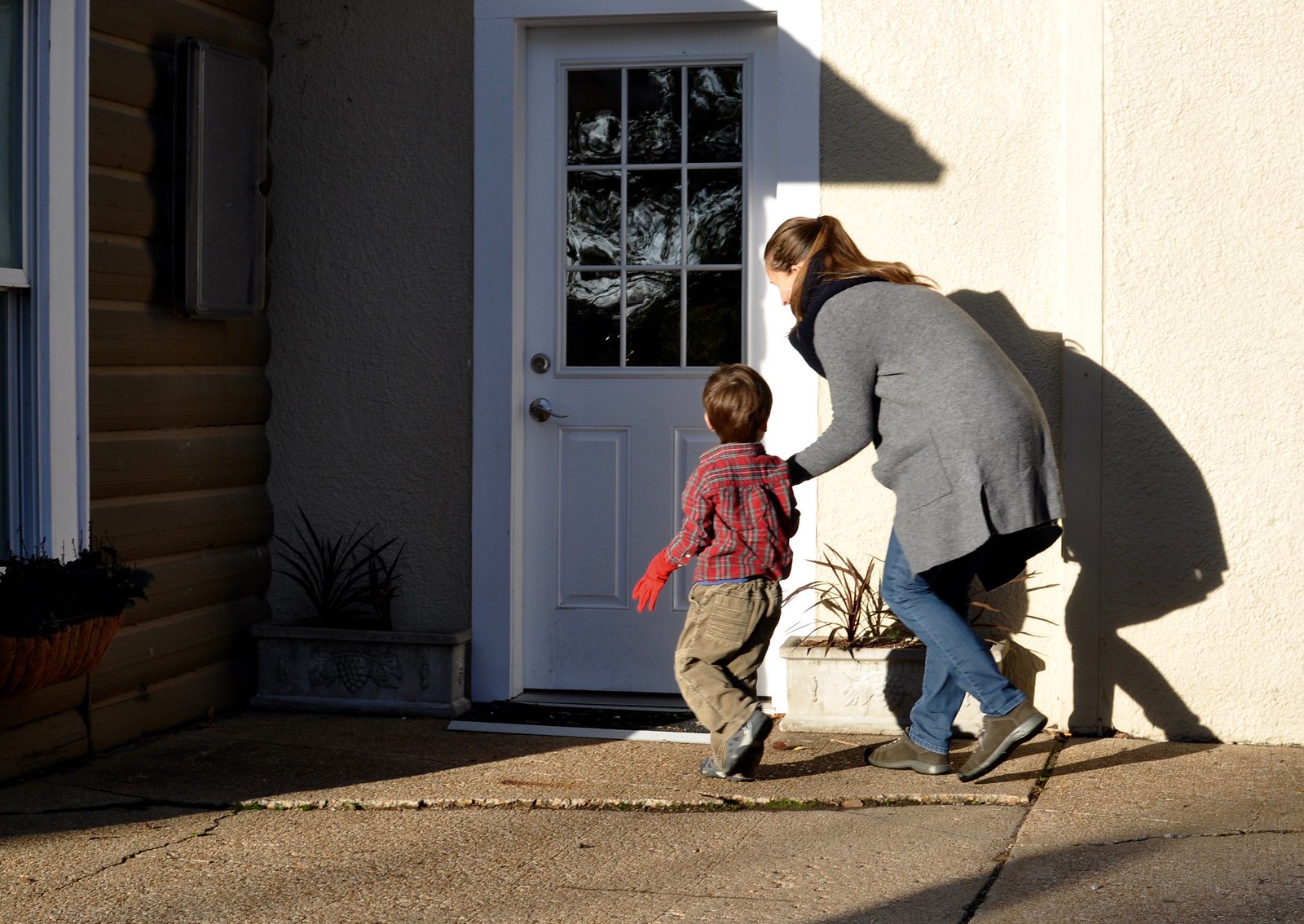Independence in the Primary Child: Why We Should Let Them Walk
 For the young child, walking is a relatively new skill. Some of the children in the Children's House are only two years old, meaning they have only been walking for half their lives! For such children, walking in itself is a skill to acquire and practice: an enjoyable and necessary part of developing muscles, balance, self-construction, self-confidence, and above all else, independence - especially when it comes to walking into their classrooms each day. Below, read about why we encourage parents to allow their young children to walk from the car to their classroom every morning rather than carrying them, and how this can help build independence.
For the young child, walking is a relatively new skill. Some of the children in the Children's House are only two years old, meaning they have only been walking for half their lives! For such children, walking in itself is a skill to acquire and practice: an enjoyable and necessary part of developing muscles, balance, self-construction, self-confidence, and above all else, independence - especially when it comes to walking into their classrooms each day. Below, read about why we encourage parents to allow their young children to walk from the car to their classroom every morning rather than carrying them, and how this can help build independence. It is so tempting to carry our young children in our arms. In our arms, they are close to our faces and hearts; there is comfort there. But when we are trying to encourage independence, it is important that we allow the young child walk into her classroom every morning. "We should bring awareness to the big and small ways we can encourage independence in our children," says Head of School Laura Ceretti-Michelman. When we set the expectation that our child will walk to the classroom door, carrying his or her own items, we empower the child to be independent and responsible, and he will rise to the occasion.
It is so tempting to carry our young children in our arms. In our arms, they are close to our faces and hearts; there is comfort there. But when we are trying to encourage independence, it is important that we allow the young child walk into her classroom every morning. "We should bring awareness to the big and small ways we can encourage independence in our children," says Head of School Laura Ceretti-Michelman. When we set the expectation that our child will walk to the classroom door, carrying his or her own items, we empower the child to be independent and responsible, and he will rise to the occasion. If you are a parent to a Primary child here at Villa di Maria, you may have noticed that the Directresses never carry your child from his car seat into the classroom. There is a passivity to being carried around, passed from one set of adult arms into another set of adult arms, that we want to avoid. Instead, if your child needs help unbuckling himself in the car, do so, then encourage him with verbal prompts like "Don't forget your lunch box!" with a big smile and kiss good-bye.
If you are a parent to a Primary child here at Villa di Maria, you may have noticed that the Directresses never carry your child from his car seat into the classroom. There is a passivity to being carried around, passed from one set of adult arms into another set of adult arms, that we want to avoid. Instead, if your child needs help unbuckling himself in the car, do so, then encourage him with verbal prompts like "Don't forget your lunch box!" with a big smile and kiss good-bye.

 If you anticipate walking your child to her classroom in the morning, allow extra time so you won't feel rushed and tempted to sweep her up in your arms to save time. A child will feel much more empowered if she is allowed to carry her own personal items, by way of her own two feet. How grown up she will feel! It is important to allow a child of this age to control as much about her own circumstances as possible, especially as so much is not yet in her control.
If you anticipate walking your child to her classroom in the morning, allow extra time so you won't feel rushed and tempted to sweep her up in your arms to save time. A child will feel much more empowered if she is allowed to carry her own personal items, by way of her own two feet. How grown up she will feel! It is important to allow a child of this age to control as much about her own circumstances as possible, especially as so much is not yet in her control. Talk with your child ahead of time about the expectations of walking to the classroom and being responsible for her own items, and we will set an example for him or her here at school!
Talk with your child ahead of time about the expectations of walking to the classroom and being responsible for her own items, and we will set an example for him or her here at school! You may be amazed by the carryover from these small changes; a child who carries her own items will likely take on more responsibility at home, like learning to make her own lunch the night before school, doing her own laundry, doing her own dishes after dinner, and so much more.
You may be amazed by the carryover from these small changes; a child who carries her own items will likely take on more responsibility at home, like learning to make her own lunch the night before school, doing her own laundry, doing her own dishes after dinner, and so much more.

